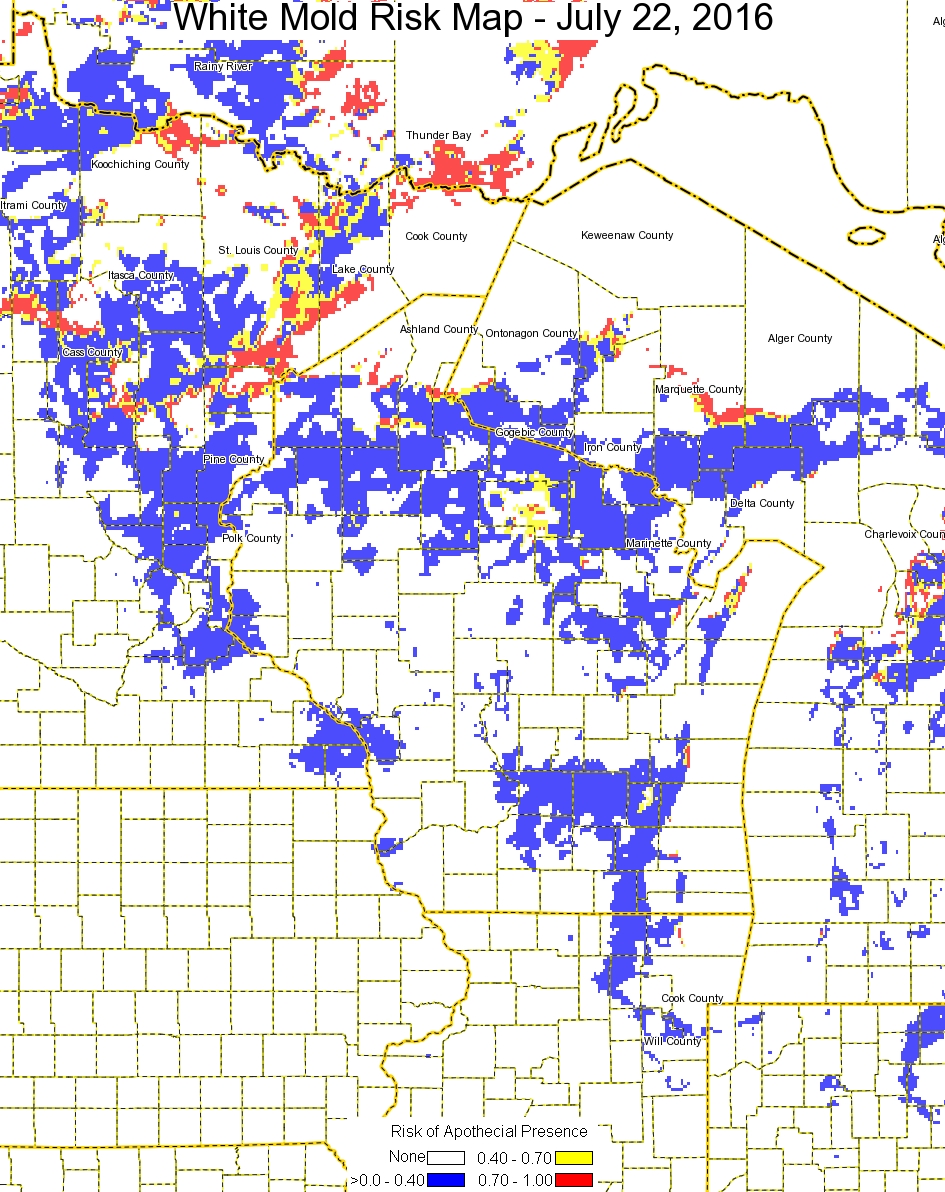Wisconsin White Mold Risk Map – July 22, 2016
Damon L. Smith, Extension Field Crops Pathologist, University of Wisconsin-Madison
Jaime Willbur, Graduate Research Assistant, University of Wisconsin-Madison
Sclero-cast: A Soybean White Mold Prediction Model
**This tool is for guidance only and should be used with other sources of information and professional advice when determining risk of white mold development. We encourage you to read the model how-to guide which can be downloaded by clicking here**
Risk of apothecial presence and subsequent white mold development risk has declined over the last week across the state of Wisconsin. Hot weather has reduced this risk substantially. Three-day forecasts show continued stability of low risk throughout much of the state. The UW Field Crops Pathology crew has scouted 10 production fields in southern and south-central Wisconsin over the last week. These activities have yielded very low numbers of apothecia in naturally infested, dry-land fields. This is consistent with the low predictions by the model. Risk for white mold in irrigated fields can be elevated above that predicted by this model. In irrigated fields around Hancock, larger numbers of apothecia have been observed. Risk in this portion of the state has been shown to be low (blue color), however, irrigation modifies this risk to a more moderate level. The window of opportunity to apply fungicide to control white mold in soybean is rapidly closing. In another 7-10 days optimal timing of fungicide application will have passed for much of the soybean production area in the state. Be sure to consult the how-to guide for assistance in interpreting this map if you are considering spraying fungicide to control white mold.



